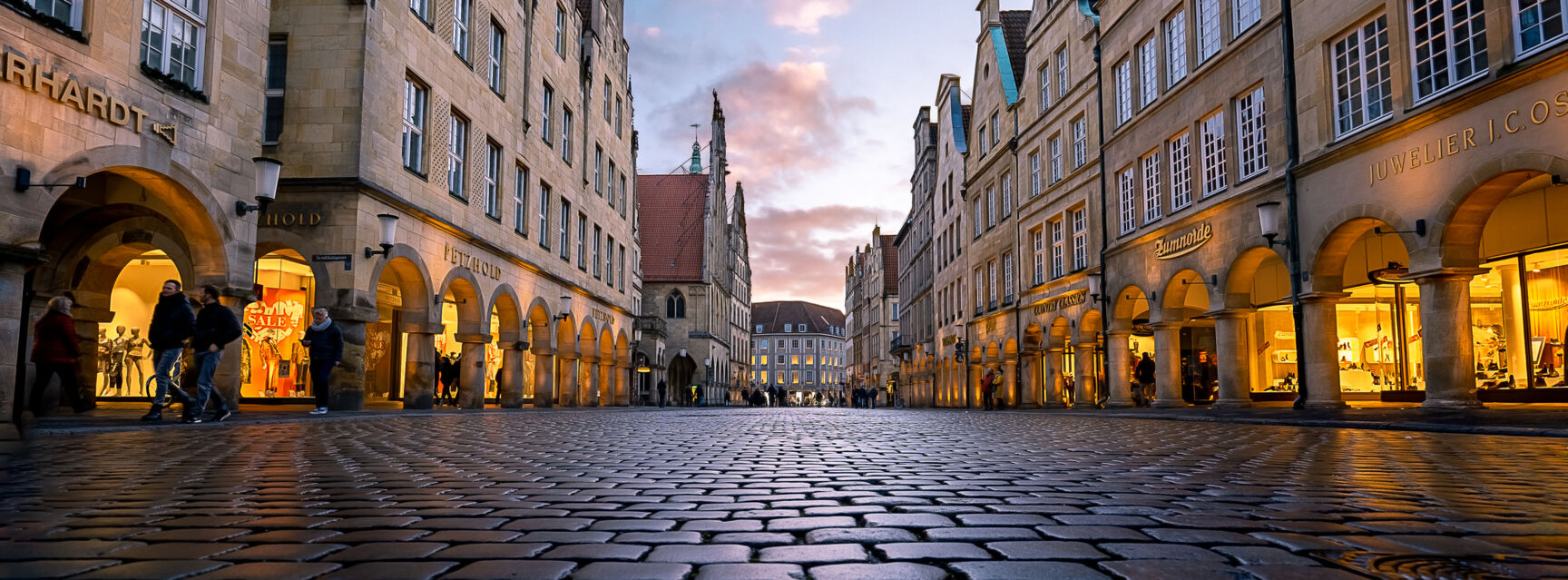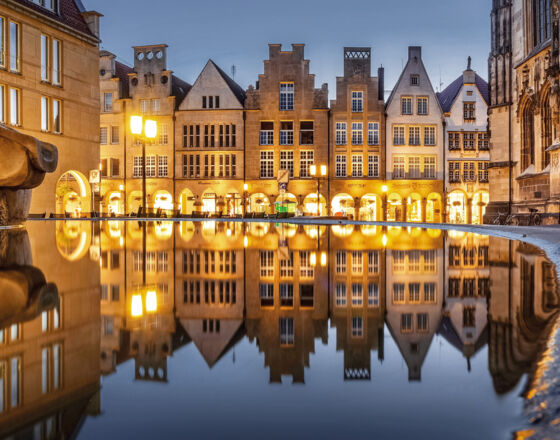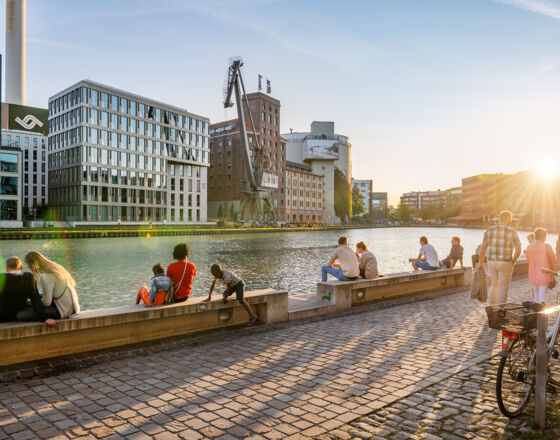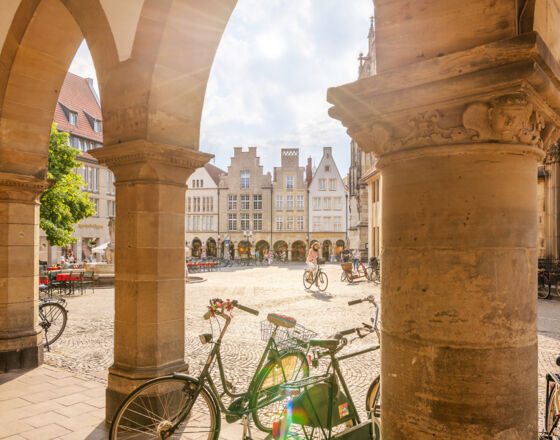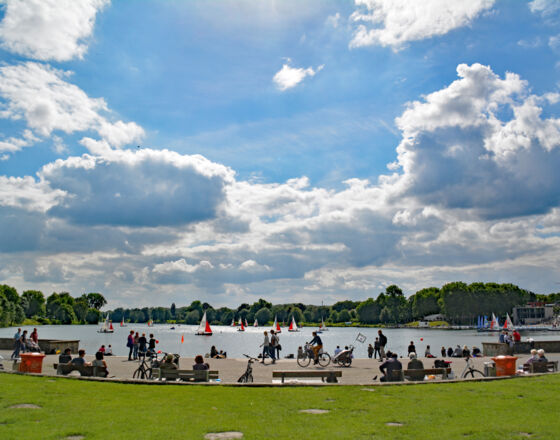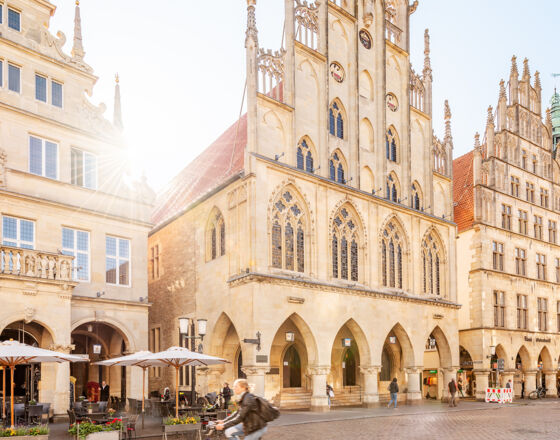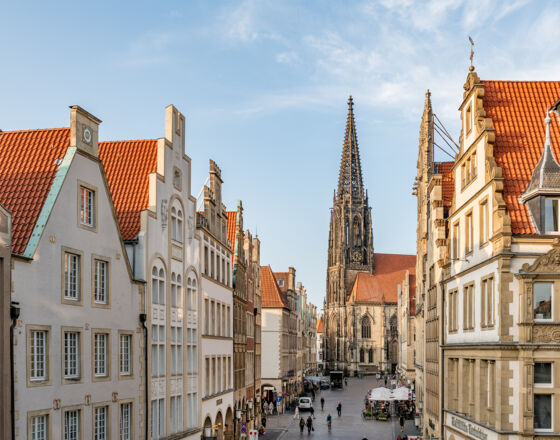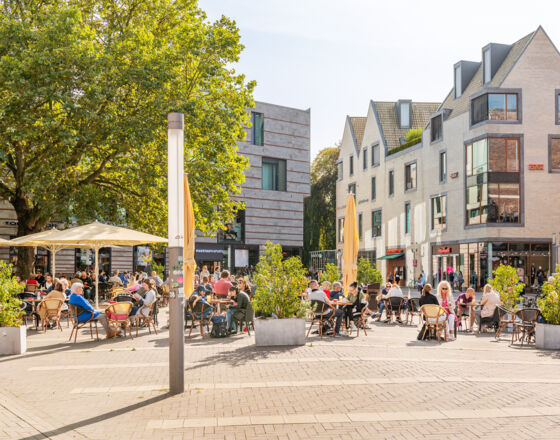Highlights
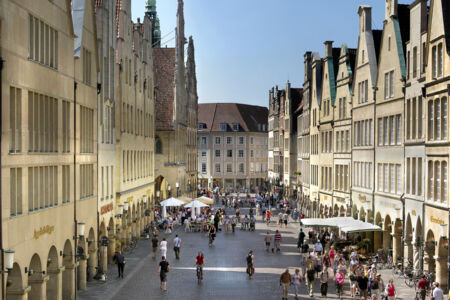
Prinzipalmarkt
Münster’s Prinzipalmarkt is a piece of living town history, telling tales from the Middle Ages, the Hanseatic League, and the ancient merchant families that in part pursue their businesses even today. The square with its characteristic gabled houses and colonnades is Münster’s economical and political centre, and it's rich in tradition. This is the site of the historical town-hall. Exclusive shops and restaurants and cafes are located here as well. Once a year, the Hanseatic Banquet takes place here, and the city's guests are invited to be served culinary delicacies by the merchants in front of the historic backdrop.
Read more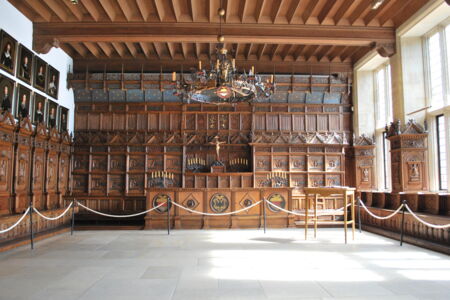
Hall of Peace
The Hall of Peace in Münster’s gothic town hall owes its name to the peace treaty between Spain and the Netherlands, which was concluded here under solemn oath on 15 May 1648. The gallery of portraits, with its pictures of ambassadors was purchased by the council of Münster. In April 2015, the European Heritage Label was awarded to the Town Halls of Münster and Osnabrück as the ‚Sites of the Peace of Westphalia‘ by the European Commission. The model of a Hanseatic cog is a reference to Münster's 400-year affiliation with the Hanseatic League to be found in the Bürgerhalle in the historic town hall.
Read more
Salzstraße
The Salzstraße is the oldest trade street in Münster, Westphalia, and at the same time a busy shopping street with several historical buildings and sights. A special feature of the Salzstraße are the stones from all the Hanseatic cities embedded in the pavement and edged with brass. Placed in 1993 on the occasion of the 1200th anniversary of Münster's founding in 793 they are a reminder of the city's membership and importance in the Hanseatic League.

St. Lamberti’s Church
St. Lamberti’s Market and Town Church is located where the Roggenmarkt (rye market) and Alter Fischmarkt (old fish market) lead to the Prinzipalmarkt. The hall church, which was built between 1375 and 1450, owes its high profile to the gruesome history behind the cages up on the spire. That’s where the corpses of the three Baptist movement leaders were hung in the mid-16th century. St. Lambert's Church accommodates the 'loftiest office' of Münster, the Türmerstube (chamber of the tower keeper). A tower keeper is mentioned for the first time in records dating to 1383. Except for a few short hiatuses, Münster has had a tower keeper ever since then. After World War II, this municipal position was one of the first to be revived in 1950. The copper horn can be heard every night (9-12 p.m. on the half-hour, except Tuesdays).
Read moreContact
Tourist Information
Heinrich-Brüning-Straße 7
48143 Münster
+49 251 492 27 10
tourismus@stadt-muenster.de
Travel options
Münster is nearby. No matter whether you arrive by car or train, by plane or bicycle, the university town of Münster is convenient to reach. Even coming to Münster by boat is not a problem.

